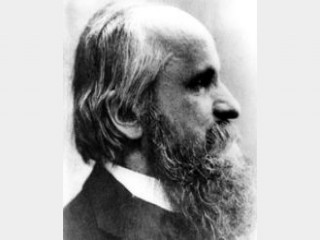
Alexius Meinong biography
Date of birth : 1853-07-17
Date of death : 1920-11-27
Birthplace : Lemburg, Austria
Nationality : Austrian
Category : Famous Figures
Last modified : 2010-11-18
Credited as : Philosopher, ,
The Austrian philosopher Alexius Meinong, Ritter von Handschuchsheim, made important contributions to the general theory of reference and to the understanding of values.
Alexius Meinong was born in Lemburg, Poland, but his family soon returned to Austria. All his formal education was in Vienna, first at the Academic Gymnasium and then at the university, where in 1874 he took his degree in history and philosophy. Like the other important figures in Austrian philosophy, he then came under the influence of Franz Brentano. Brentano encouraged him to study David Hume, and in due course Meinong produced two books on the English philosopher. His philosophical apprenticeship was thus in the tradition of British empiricism, and his subsequent work owes more to this tradition than to any German philosopher.
Meinong taught at Vienna as a lecturer for four years (1878-1882) and then moved to Graz, where he taught for the remainder of his life. The major event of his long tenure at Graz was his founding of the Institute of Experimental Psychology, the first such institution in Austria.
Meinong's most original contribution to philosophy is his theory of objects. His starting point is that the theory of objects is too narrowly construed. There is a general tendency in philosophy to deal only with those objects which exist and, moreover, a tendency in commonsense thinking to equate the existent object with material entities. Against these two tendencies Meinong argues that there is an important distinction between talking about nonexistent objects and talking about nothing. It is, for example, possible to sort out true and false statements about Santa Claus, and this could not be the case if the name denoted nothing at all. What it denotes is an object with quite definite properties ("lives at the North Pole," "drives reindeer") which does not happen to exist. In general, says Meinong, it is always possible to distinguish the characteristics of an object (sosein) from its being (sein). This principle allows him to introduce highly imaginative discussions of impossible objects, incomplete objects, defective objects, inclusive objects, and the like.
In a posthumously published book, On the Foundations of the General Theory of Values (1924), Meinong extends his theory to ethics and esthetics. Here he tries to show that values are objects which we apprehend through various modes of feeling. He then attempts to provide criteria for situations in which these feelings could be said to be correct or incorrect, appropriate or inappropriate.
Even though Meinong's work is still largely unread, it has had considerable influence on English philosophy through the interpretations of Bertrand Russell and G. E. Moore. More recent work indicates that these early interpretations were defective and that Meinong may yet receive a more adequate hearing.
J. N. Findlay, Meinong's Theory of Objects and Values (1933; 2d ed., 1963), is a largely sympathetic exposition, but some criticisms are added together with a brief biographical sketch and an overall assessment of Meinong's significance. Gustav Bergmann, Realism: A Critique of Brentano and Meinong (1967), offers a full-length appraisal.
Lindenfeld, David F., The transformation of positivism: Alexius Meinong and European thought, 1880-1920, Berkeley: University of California Press, 1980.
















